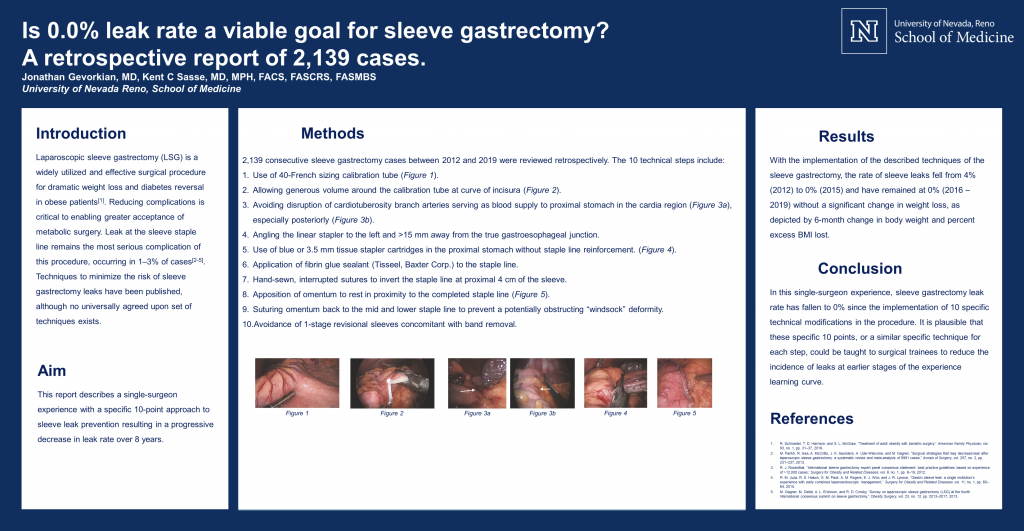Leaks from the tissue staple line have long been the most serious potential complication of gastric surgery, and one that continues to occur in between 1% and 2% of sleeve gastrectomy cases worldwide. When a leak occurs, more surgery is required and further complications can arise. Now, Dr. Sasse, along with Dr. Jonathon Gevorkian, reports 10 specific technical steps of the procedure that have resulted in an unprecedented 0.0% leak rate.
Teaching Surgeons to Improve Safety
In a published poster presented at the Society of American Gastrointestinal and Endoscopic Surgeons (SAGES) virtual annual meeting, Dr. Sasse shared these ten steps to teach surgeons how to improve safety and reduce the leak rate of sleeve gastrectomy.

“It’s a team effort,” Dr. Sasse says. “We have been laser focused on safety for 20 years, and elimination of the number one risk of sleeve gastrectomy has been our top priority.”
The research findings were presented at the virtual SAGES meeting this year, a top national conference for surgical advancements in the gastrointestinal system. Drs. Sasse and Gevorkian outlined 10 specific technical considerations they believe have led to the unprecedented 0.0% leak rate over more than 2,000 consecutive cases over the past 6 years.
“Our hope is that all centers can benefit from the specific technical features required to produce zero leaks, so that our national statistics will show these extremely high levels of safety across the country in our field,” says Dr. Sasse.
Sleeve gastrectomy is currently the most widely performed bariatric or metabolic surgery in the world and demonstrated in major studies to reverse both type 2 diabetes and obesity. In the United States it is among the safest procedures offered in any hospital.
If weight-loss surgery is something you’re considering, the team at Nevada Surgical in Reno can answer all of your questions. Contact us today.




